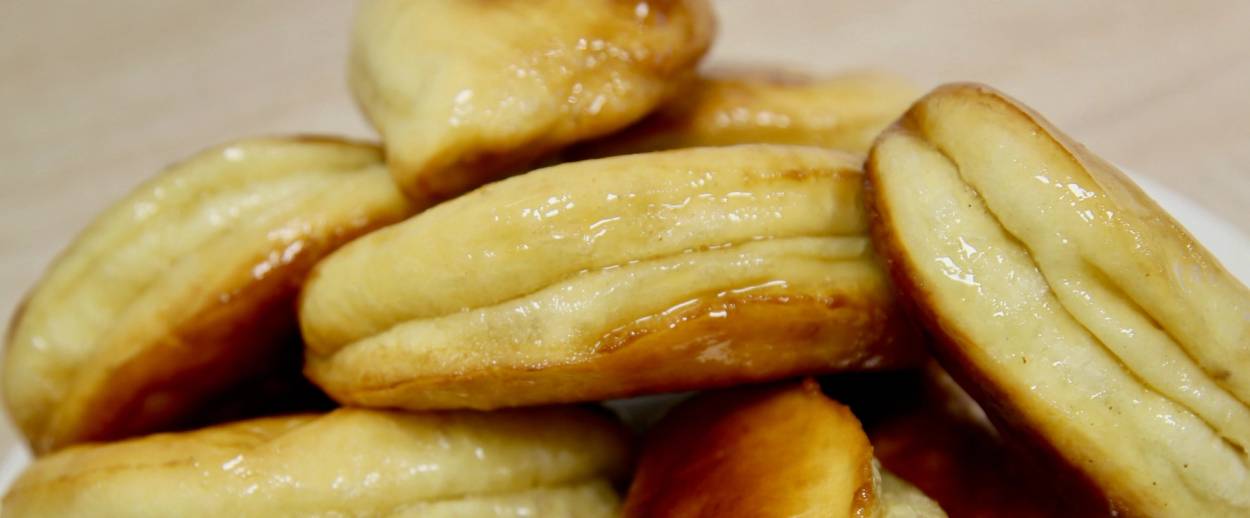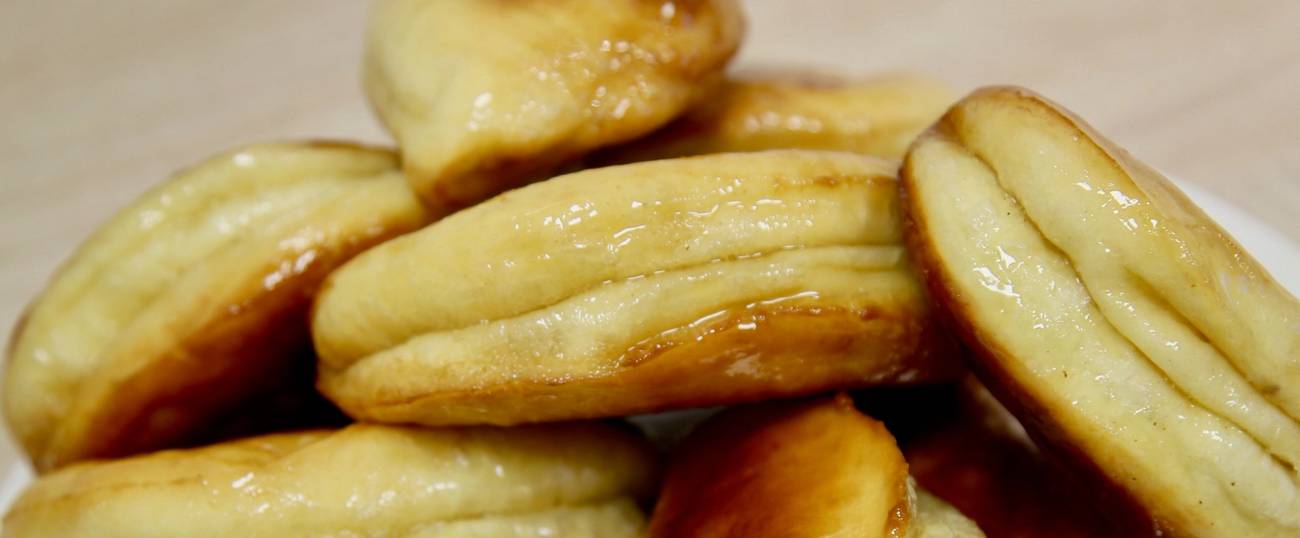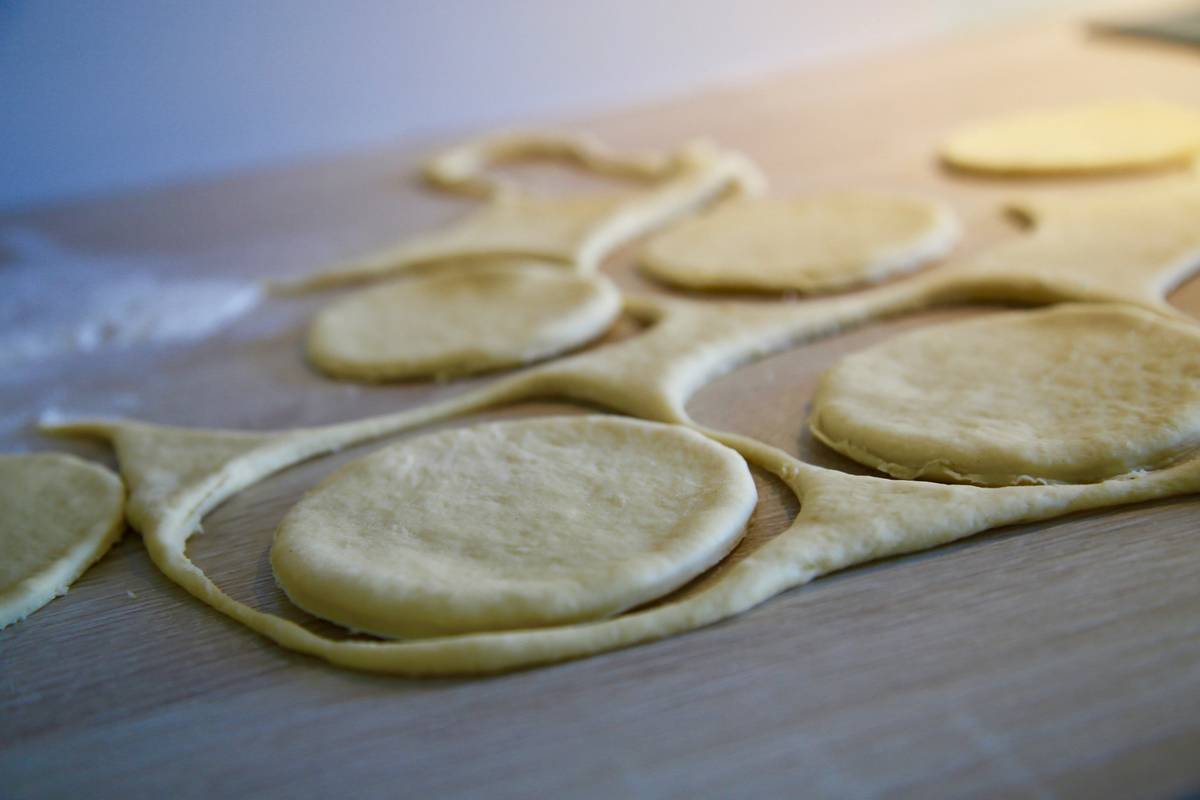Making Hanukkah ‘Japonesas,’ the Jewish Doughnuts of Medieval Spain
This holiday, a delicacy from the ‘Jews of the Rock’ and a delicious taste of Gibraltar




As far as I remember, walking down the swarming main street “Calle Real” of the Spanish city La Linea de la Concepcion in the Strait of Gibraltar, allowed me to see those fried half-moon shape doughnuts soaked in honey through the bakeries store windows.
One mouthful and the vanilla confectioner’s custard overran your mind and carried you away. “Japonesas” is the name of this typical fried sweet pastry that can be eaten throughout the year in La Linea. But when you cross the border of the city and enter Gibraltar, you see that “japonesas” are one sample of the sweet pastries prepared. The Jews of the Rock have been selling them since the beginning of the 20th century, and perhaps before.
Testifying to the cultural mix in Gibraltar, “japonesas” are the witnesses of past trade routes that came to the Strait from Asia, India, North Africa, Italy, and Spain. It is the product of a living multiculturalism. Even if the etymology of “japonesas” is still a mystery, it is obvious that “japonesas” are a mix of Andalusian cuisine (dishes prepared under al-Andalus by Jews and Muslims over the 13th century) and an added European twist with the introduction of custard. Culinary preparations of milk and eggs thickened by heat have been part of Ancient Roman cuisine since the first century, thanks to Apicius. However, the first confectioner’s custard only seems to date back to the 17th century.
The Jews of the Rock, whose presence is documented from the 14th century, are a symbol of diversity, and a key component of modern Gibraltarian identity. Whether they come from Spain, Portugal, or Morocco, they remain a marker of the cultural ethnic mix in the Rock.
Many of the Jews expelled from Spain in 1492 passed through Gibraltar on their path towards North Africa. The culinary evolution between the 14th and the 18th century results in the arrival of a Christian cuisine bearing “European” flavors. This may explain the presence of the filling custard.
Now an emblem of Jewish pastry in Gibraltar, “japonesas,” are eaten for Hanukkah as they are fried in oil, they stand as a delicious testament to the durability of Jewish traditions.
Recipe for Japonesas
Yield: for 12 japonesas
Time: 40 minutes + rise 2h
Ingredients for dough:
1 ¼ fl.oz neutral oil
¾ cup of milk
2 ½ cups of flour
A knob of fresh yeast
1/3 cup of confectioner sugar
1 egg
½ yolk egg
2 tsps of vanilla
1 tsp salt
2 cups of honey
Ingredients for the confectioner’s custard / vanilla pudding:
7 tsps of cornstarch (Maizena)
4 tbsps of sugar
1 tsp salt
1 cup + 2 tbsps of milk
2 yolks
1 oz melted butter
2 tsps of vanilla
For the confectioner’s custard:
For the dough:

Hélène Jawhara-Piñer is a PhD candidate in History, Medieval History, and the History of Food in France. She was awarded the Broome & Allen Fellowship from the American Sephardi Federation in 2018. She gives Sephardic cooking classes in France specializing in Spanish and Moroccan Jewish cuisine.